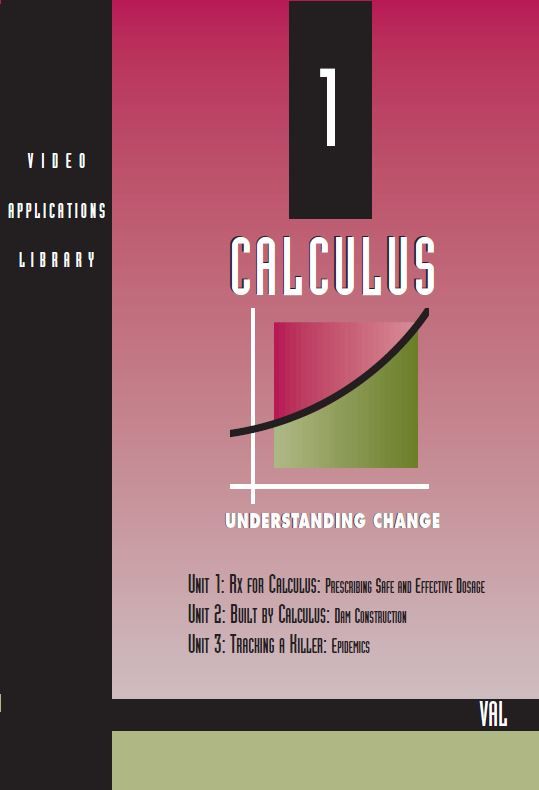Calculus: Understanding Change: Unit 1: RX For Calculus: Prescribing Safe and Effective Dosage
Author: COMAP, Text by Patrick Driscoll & Frank Gioadano
How do doctors and pharmacologists use calculus to prescribe drugs? How do engineers use area, volume, and pressure equations to design dams? Calculus: Understanding Change gives students a powerful demonstration of the critical role calculus plays in our lives.
Unit 1: RX For Calculus: Prescribing Safe and Effective Dosage (8:57)
Summary of the Video
The video opens with the familiar "I can't believe I ate the whole thing" AlkaSeltzer ® commercial, then follows with scenes of medication on a supermarket counter and a Rolaids® commercial. The narration sets the stage for the introduction of a mathematical model by citing the need for research to determine medication dosages that are safe and effective.
Next we visit an automobile accident scene and see a driver begin a breath test for alcohol concentration. We learn that a blood alcohol level below 0.08 grams per deciliter is considered safe, and see a graph showing that alcohol absorption is rapid, but elimination proceeds at a slower, linear rate of about 0.02 grams per deciliter per hour.
Scenes of people purchasing and consuming alcoholic beverages are followed by some important data. The consumption of about six ounces of alcohol in an hour results in a blood alcohol level of about 0.11. We are introduced to a simple linear model for the decrease in blood alcohol and see the model used to determine that it takes about 1.5 hours to drop below the 0.08 level after consuming six ounces of alcohol.
The next segment begins with a cardiac emergency scene. We see a table of data and the related graph showing the decrease in the amount of Digoxin, a common cardiac medication, in the bloodstream. It is clear that the concentration of Digoxin does not decrease in the linear manner of blood alcohol. The graph looks very similar to the familiar model for exponential decay, as we are reminded over scenes of a nuclear explosion.
A characteristic of exponential decay is that the rate of decay depends on the amount of the decaying material that remains, so a model is introduced in which the rate at which the body eliminates Digoxin depends on the amount of Digoxin in the bloodstream. Integration is applied to produce an equation for C(t), the concentration of Digoxin at a given time (in days).
The original data is used to check the model and to detem1ine the coefficient of t. Once this constant is determined, the model can be used to solve a variety of problems. We see an example in which the time between dosages is found to be about 3.7 days, and are left with a question about the best maintenance dosage to pursue on our own.
Video support materials are available as part of COMAP full membership. Each video is accompanied by a user's guide with reproducible student exercises and quizzes.

Mathematics Topics:
Application Areas:
Prerequisites:
You must have a Full Membership to download this resource.
If you're already a member, login here.